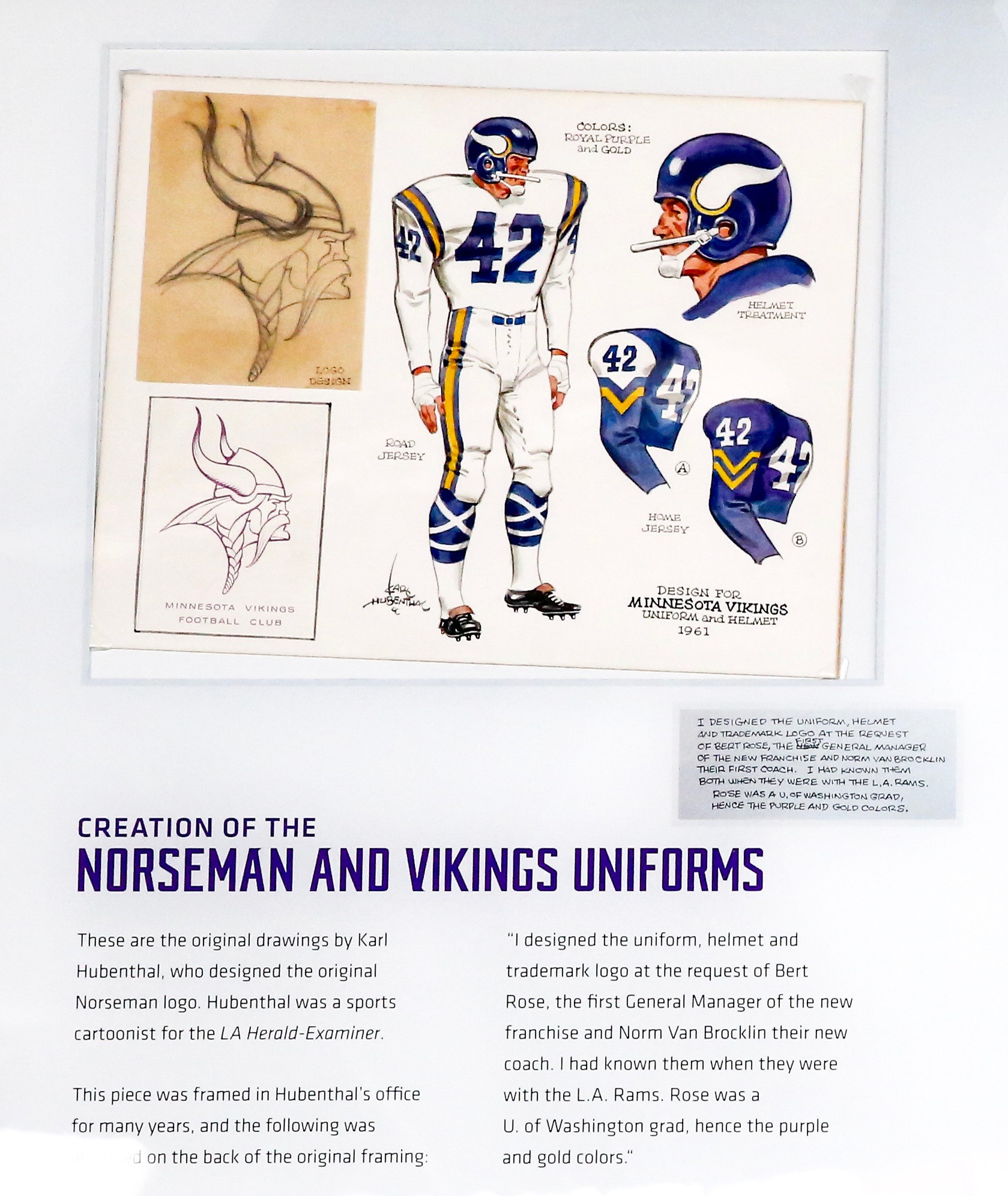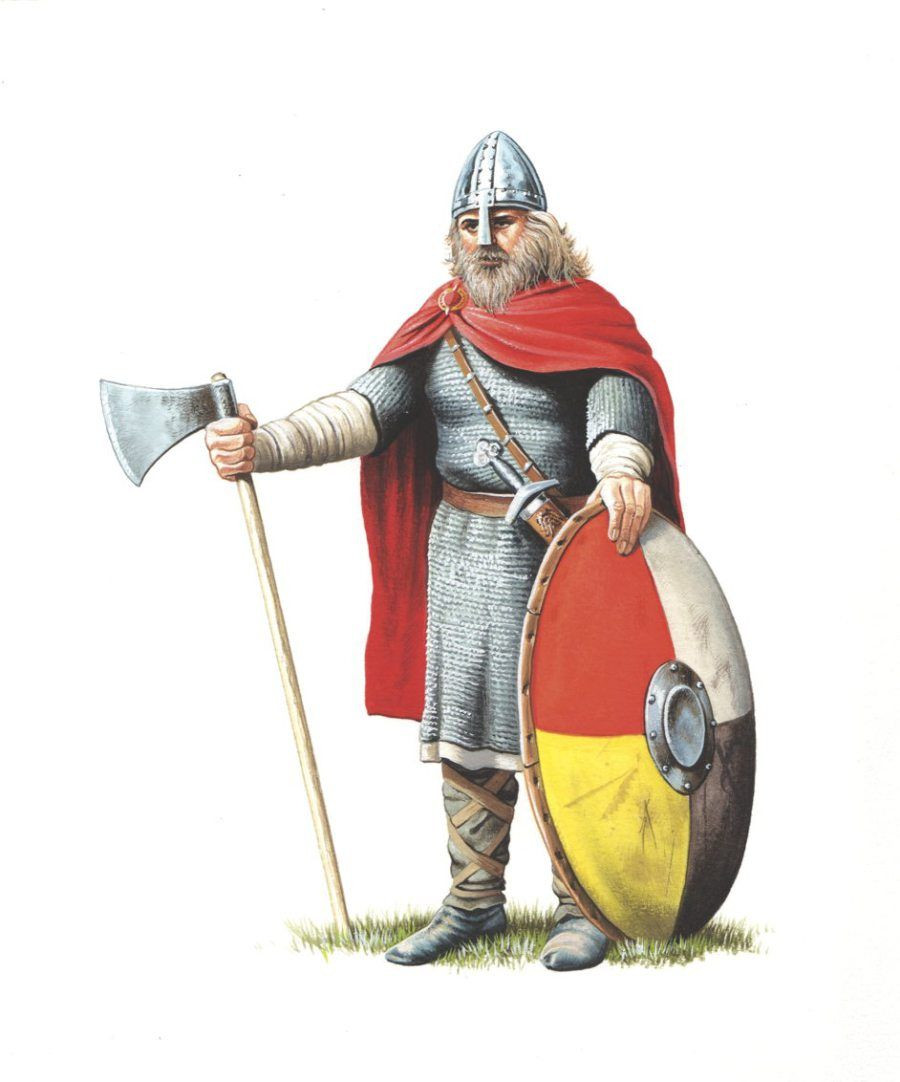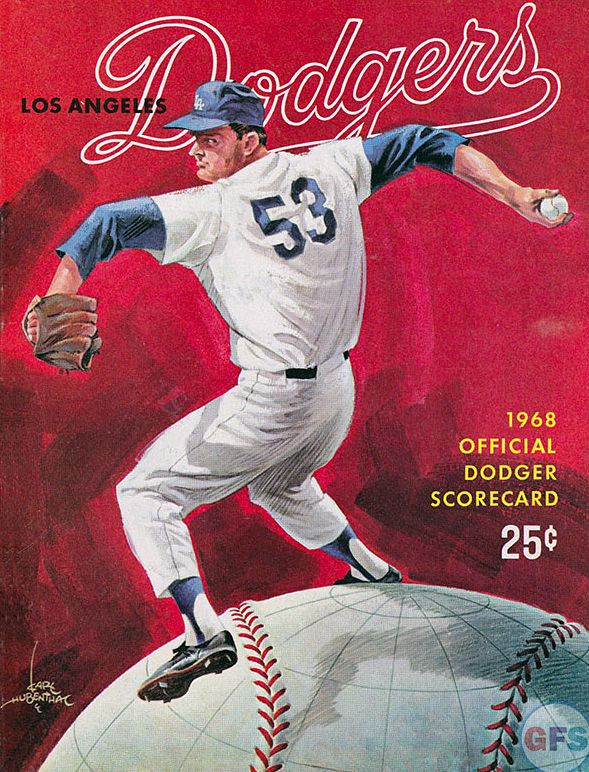For fans of the gridiron, the Minnesota Vikings Uniforms are instantly recognizable. The striking purple and gold, the iconic horned helmet, and the fierce Norseman logo – these elements have become synonymous with the team’s identity and history. But have you ever stopped to wonder, who was the creative mind behind these enduring designs? Often in sports, uniform and logo designs are credited to institutions, teams, or major brands like Nike, overshadowing the individual artists who actually bring these visions to life. This is especially true when delving into the history of older sports franchises, where the stories behind their visual identities can become obscured by time and institutional shifts.
Take the Minnesota Vikings, for example. Ask the average fan about the origins of their distinctive helmet, the Norseman logo, or even the team’s color palette, and you’re likely to be met with a shrug. Even within the Vikings organization itself, until recently, this knowledge was surprisingly scarce. However, the answers to these questions weren’t lost to history. For decades, they were preserved on the office wall of a Los Angeles cartoonist, and now, this fascinating story is part of a permanent exhibition at the Vikings’ home stadium in Minneapolis.
Unveiling the Mystery: Karl Hubenthal, the Vikings’ Uniform Designer
The story begins in 1961, with the formation of the Minnesota Vikings. Key figures in the team’s early development were Bert Rose, the first general manager and former public relations director for the Los Angeles Rams, and Norm Van Brocklin, the first coach and also a former Rams quarterback. When it came time to craft the visual identity for the new Vikings franchise, they turned to someone they knew and trusted from their Los Angeles days: Karl Hubenthal, a prominent and talented sports cartoonist.
It was Karl Hubenthal, not a committee, not a Minnesota design agency, and not the NFL’s licensing arm, who single-handedly designed the Norseman logo and the team’s original Minnesota Vikings uniforms. This included the helmet design with its now-famous horns. Following Bert Rose’s direction, Hubenthal chose purple and gold as the team colors. The reason? A simple yet personal connection: those were the colors of the University of Washington, Rose’s alma mater. This reveals a surprising detail – the quintessentially Midwestern Minnesota Vikings actually have design roots firmly planted on the West Coast, through their Los Angeles connections and a nod to a Washington university.
The revelation of Hubenthal’s role in Vikings history is thanks to his foresight in preserving his original sketches. He framed these drawings of the uniform and logo and displayed them in his office for years. On the back of the frame, he inscribed a note confirming his creation: “I designed the [Vikings’] uniform, helmet, and trademark logo at the request of Bert Rose, the first general manager of the new franchise, and Norm Van Brocklin, their first coach. I had known them when they were with the L.A. Rams. Rose was a U. of Washington grad, hence the purple and gold colors.”
From Office Wall to Stadium Exhibit: Rediscovering a Design Legacy
Karl Hubenthal passed away in 1998, and for years, his contribution to the Minnesota Vikings uniforms remained largely unknown. However, in late 2015, his daughter, Karen Chappell, while整理ing her father’s belongings, decided to reach out to the Vikings to see if they might be interested in his original drawings. The timing was serendipitous. The Vikings were in the final phases of constructing U.S. Bank Stadium, scheduled to open in 2016, and were planning a team museum called Vikings Voyage.
 Vikings Voyage exhibit featuring Karl Hubenthal's uniform sketches
Vikings Voyage exhibit featuring Karl Hubenthal's uniform sketches
“We knew right away that this was something that had to be included there,” explained Zachary Tarrant, the Vikings’ archive coordinator. “It was precisely the kind of thing we wanted to showcase. Not many teams have something so definitive and so tangible, all on display.” The result is a captivating exhibit that showcases Hubenthal’s original artwork, offering a unique glimpse into the design process and the history of the Minnesota Vikings uniforms.
The Design Details: Horned Helmets and Almost-Were Striped Socks
Hubenthal’s original design concept reveals some fascinating details, including elements that didn’t make it to the final Minnesota Vikings uniforms worn on the field. His initial sketches included diagonally crossed stripes on the socks, reminiscent of the leather straps or leggings worn by actual Vikings of the past. This forward-thinking design element, which feels very contemporary and in line with modern uniform aesthetics from brands like Nike or Under Armour, was surprisingly innovative for 1961.
 Historical Viking leggings, inspiration for Hubenthal's sock stripe concept
Historical Viking leggings, inspiration for Hubenthal's sock stripe concept
Furthermore, Hubenthal’s jersey design featured gold sleeve striping in a distinctive V-shaped pattern. Neither the sock stripes nor the unique sleeve striping were ultimately adopted for the final Vikings uniforms. According to Karen Chappell, Norm Van Brocklin himself disliked the sock leggings, as noted in a document found within Hubenthal’s files. The reason behind omitting the sleeve striping remains unknown, adding another layer of intrigue to the design story.
The discovery of these original drawings is significant for several reasons. Firstly, it’s exceptionally rare to find original uniform and logo sketches from this era of professional sports. These materials serve as a crucial artifact, a “Rosetta Stone” for understanding the Vikings’ visual heritage. Secondly, while Karl Hubenthal was a celebrated and award-winning cartoonist in the sports world, his specific contribution to the Minnesota Vikings – designing both the logo and the uniforms – was largely unacknowledged until these drawings resurfaced. Even Fred Zamberletti, the Vikings’ original trainer and long-time team historian, who was with the team from its inception through 2011, admitted he had never heard of Hubenthal.
The Purple and Gold Palette: Beyond “Making a Bold Statement”
The story behind the Minnesota Vikings colors, purple and gold, also gains clarity through Hubenthal’s story. While the University of Washington connection has been mentioned in some publications, it hasn’t been widely recognized. Interestingly, even a video on the Vikings’ official website attributes the choice of purple to a desire to “make a bold statement” and establish “an identity,” completely omitting the Bert Rose and University of Washington connection. Hubenthal’s account provides a more personal and historically accurate explanation for this key element of the Minnesota Vikings uniforms.
Karl Hubenthal: More Than Just the Vikings Designer
Who was Karl Hubenthal beyond his contribution to the Minnesota Vikings? He was a leading editorial and sports cartoonist from the 1950s through the 1980s. His cartoons were a staple of the Los Angeles Herald-Examiner and syndicated across the Hearst newspaper chain. Beyond newspapers, Hubenthal created numerous sports program covers, yearbook covers, and other sports-related artwork. He was a West Coast counterpart to renowned Eastern sports cartoonists like Willard Mullin and Bill Gallo, capturing the spirit of sports through his art.
 Examples of Karl Hubenthal's sports cartooning work
Examples of Karl Hubenthal's sports cartooning work
His daughter, Karen Chappell, reflecting on her father’s work, shared insights into his connection with the Vikings. In an interview, she recounted how her father’s presence in the Los Angeles sports scene led to his acquaintance with Bert Rose and Norm Van Brocklin during their time with the Rams. She also noted that while he designed logos for other organizations, the Minnesota Vikings uniforms were, to her knowledge, his only foray into team uniform design. While the payment for this specific project remains undocumented, Hubenthal’s pride in his Vikings creation is evident. In a 1962 cartoon, he declared seeing the Vikings uniform in action as his “personal sports thrill of 1961.”
A Lasting Legacy and Deserved Recognition
Karl Hubenthal’s extensive body of work is archived at Syracuse University and the Billy Ireland Cartoon Library & Museum at Ohio State University. While his cartoons can be readily found through online searches, his work has yet to be compiled into a comprehensive anthology. Hopefully, the renewed recognition of his pivotal role in designing the Minnesota Vikings uniforms will inspire a publisher to rectify this and celebrate his broader artistic legacy. The story of the Minnesota Vikings uniforms serves as a compelling reminder of the often-uncredited individuals who shape the visual landscape of sports. Thanks to the preservation efforts of Karl Hubenthal and his daughter, the true origin story of this iconic NFL uniform is now finally brought to light, giving credit where it is long overdue and enriching the history of the Minnesota Vikings for generations of fans to come.

